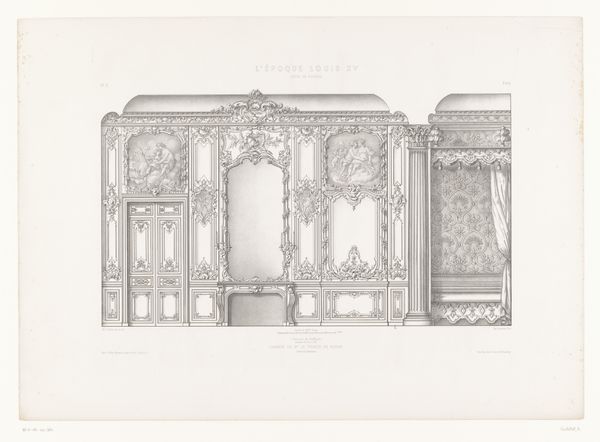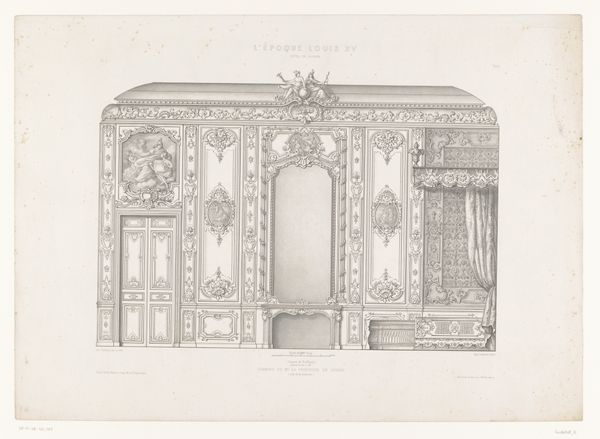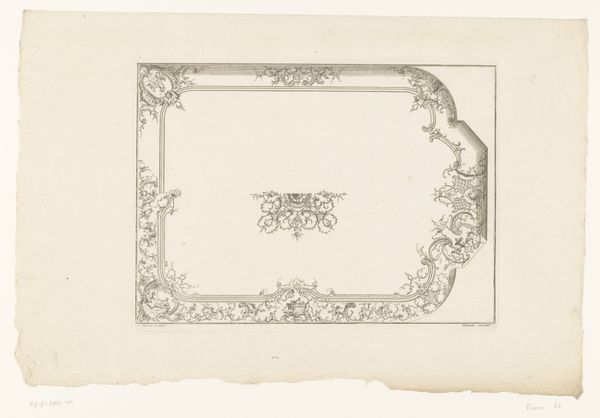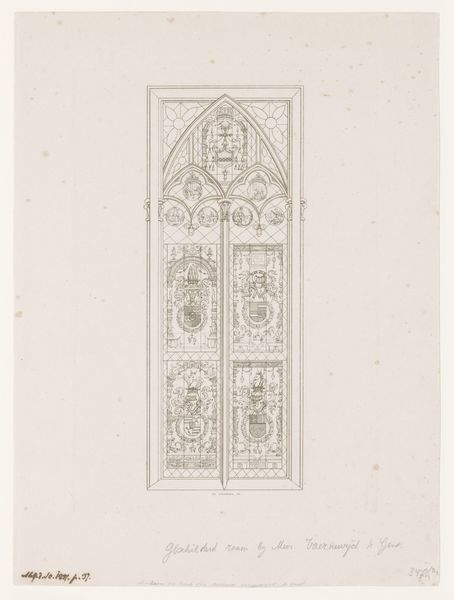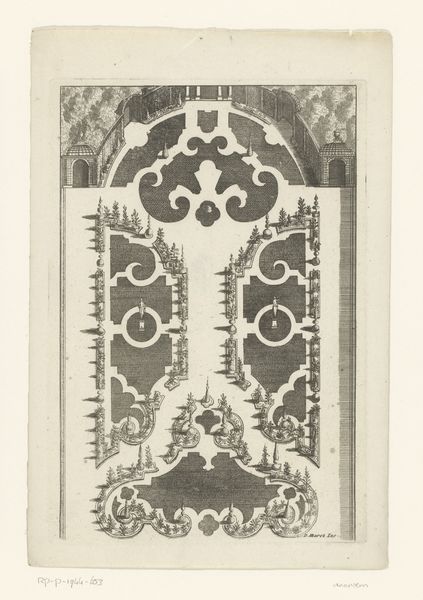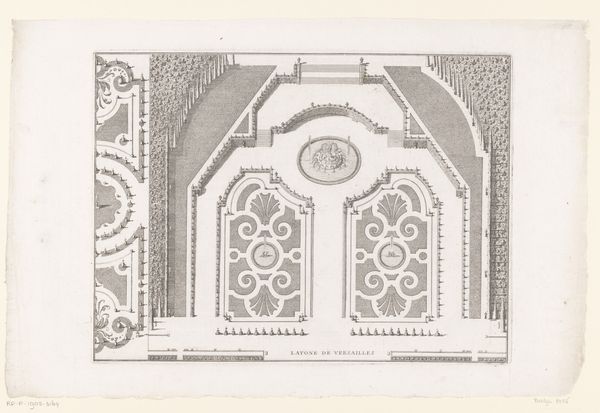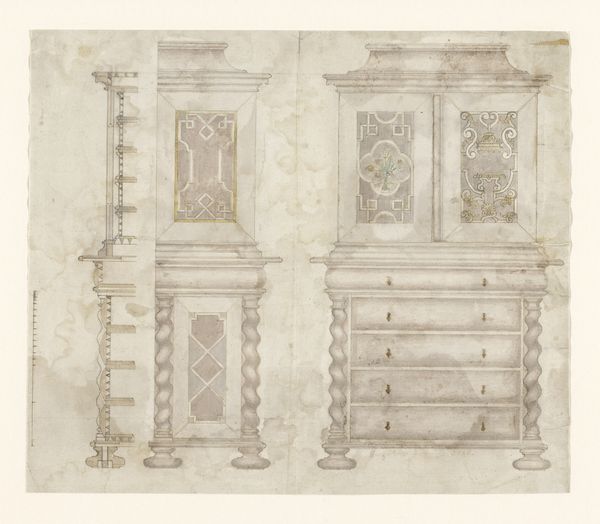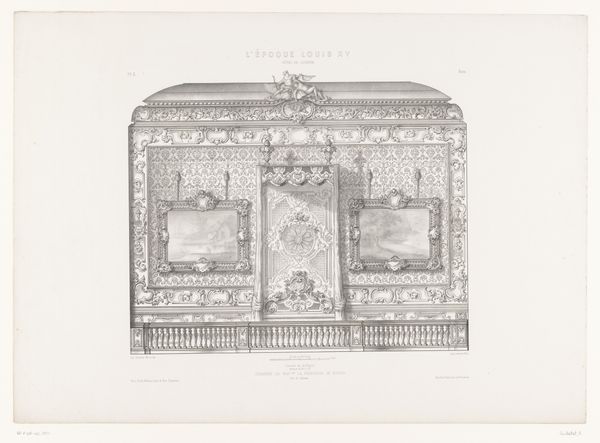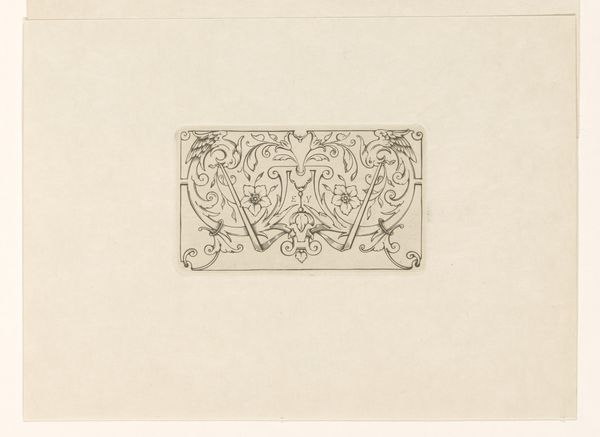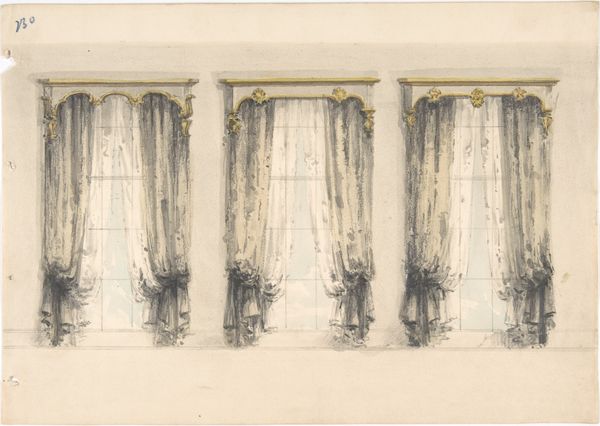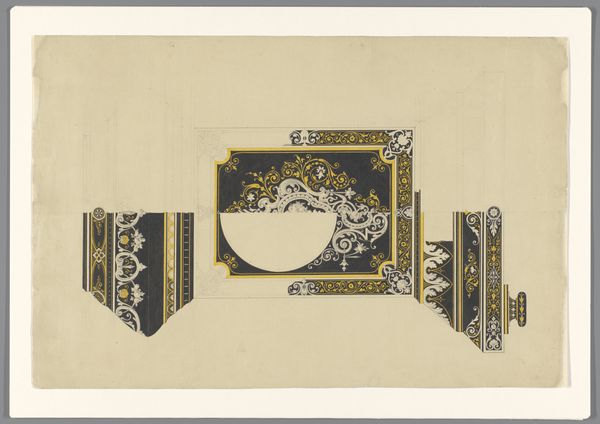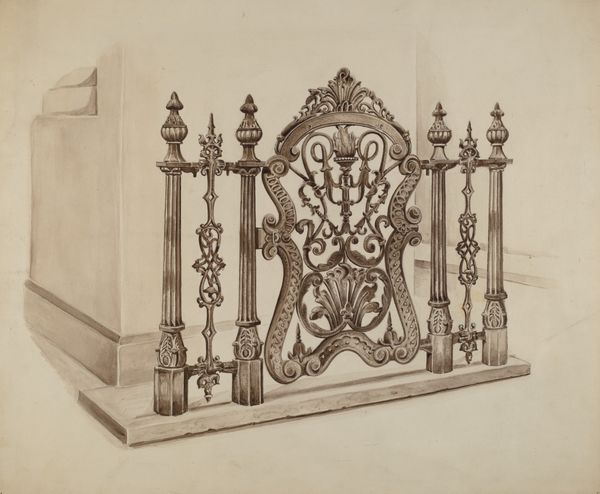
drawing, print, etching, architecture
#
drawing
# print
#
etching
#
etching
#
geometric
#
line
#
architecture
Dimensions: height 451 mm, width 631 mm
Copyright: Rijks Museum: Open Domain
Curator: This delicate etching, crafted by Alphonse Guilletat in 1859, presents a wall within the Prince de Rohan's chamber at the Hôtel de Soubise. Editor: My first impression is of an incredibly elaborate stage set, an almost dreamlike representation of aristocratic space. Curator: Exactly! The piece meticulously documents the craftsmanship that defines this Rococo interior. The line work really emphasizes the production processes behind architectural drawing in that time. It allows one to study every molding, column, and panel—giving consideration to its social context, too. This wasn’t just living, it was a statement of power expressed through opulent materialism. Editor: I’m interested in that power structure. The Prince de Rohan's chamber was never just a space for personal reflection; it performed a function. It projected an image of wealth and dynastic continuity in pre-revolutionary France. How does Guilletat’s detailed rendering amplify this message? Is it a romanticization or a critique? Curator: Romanticization, I'd suggest. Consider that this etching wasn’t produced during the height of that aristocratic power, but in the mid-19th century. It’s documentation—almost forensic in its detailing of materiality. And it makes you consider the skill necessary to reproduce a complex structure through etching: the labour invested is quite profound. Editor: True, the painstaking detail does encourage contemplation, beyond the visual spectacle alone. The emphasis on pattern, repeated in the panels and drapery, might even read as oppressive if interpreted within the social context of immense inequality. It becomes not just documentation, but also commentary—perhaps unwittingly so—on excess and exclusion. Curator: So you think it might give some kind of critique to that societal imbalance? I guess in looking back on this drawing and considering how we produce and value images, we create that opportunity for discussion ourselves. Editor: Precisely. The drawing becomes a point of access to a complex social history and helps us explore how those narratives manifest themselves in contemporary debates about identity, power, and space. It moves beyond mere representation. Curator: Indeed. That examination really enriches the piece and extends its life.
Comments
No comments
Be the first to comment and join the conversation on the ultimate creative platform.
